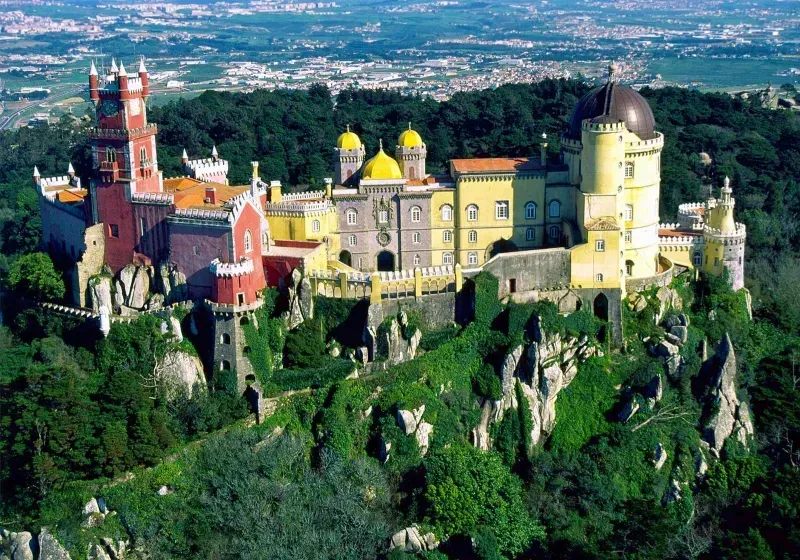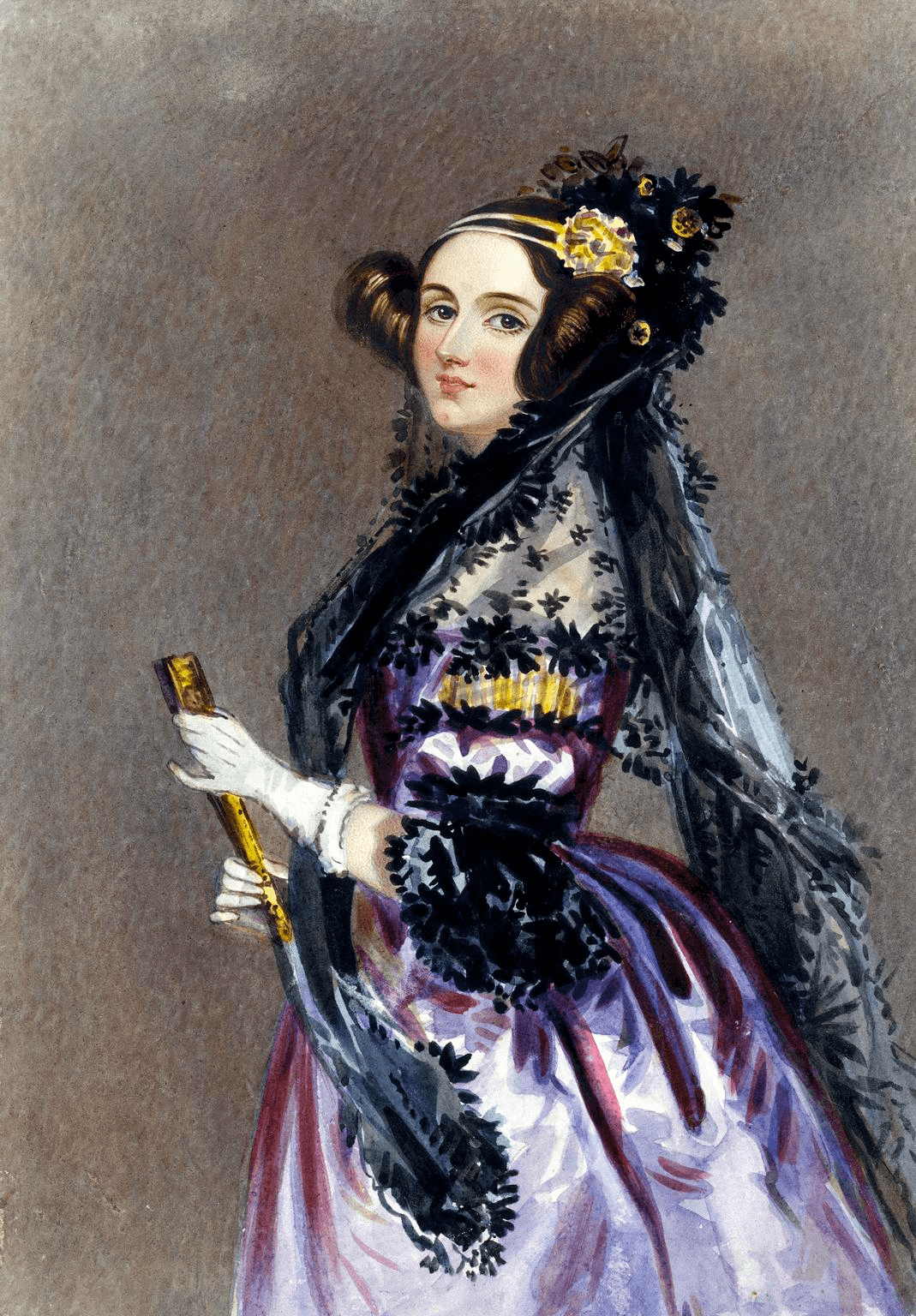Sintra, Byron, and the Dream of Ada Lovelace
Maria Fonseca
Wed Jul 09 2025

This article explores the poetic and intellectual legacy of Lord Byron and his daughter Ada Lovelace through the lens of Sintra, Portugal—a place that captivated Byron’s imagination. It reflects on Byron’s Romantic vision and Ada’s pioneering role in computing, highlighting their contrasting yet complementary approaches to creativity and knowledge. Sintra’s layered history and symbolic richness provide a metaphorical space where their legacies meet. The piece suggests a deeper continuity between emotion and reason, poetry and code. Ultimately, it invites readers to see cultural landscapes as bridges between past and future imagination.
The mists settle differently in Sintra. They linger in the hollows of the hills, as touch the rooftops of pastel palaces. One can walk into the mist as one is taken through Sintra's ancient forests. And where is Sintra ? Sintra is in Portugal, just a short train ride from Lisbon. Sintra has enchanted many—travellers, poets, mystics, and monarchs. But few fell more deeply under its spell than Lord Byron, the tempestuous English poet of the Romantic era. And few have carried the inheritance of imagination as strikingly as his daughter, Ada Lovelace, whose work would lay the foundations for the future we now call digital.
This is the story of two lives joined by blood but divided by fate. It is also the story of a place—Sintra—that echoes with the dreams of those who pass through it, leaving behind traces not only in architecture and gardens but in poetry, in memory, and in the very way we think about beauty, reason, and possibility.
The Poet in Paradise
In the summer of 1809, a young George Gordon Byron, freshly exiled from the stifling conventions of English high society, arrived in Portugal, while doing his grand European tour. At twenty-one, he was restless—brimming with ambition, haunted by personal demons, and eager to immerse himself in lands unspoiled by the industrial and political upheavals of Britain. He found in Sintra something that seemed to stand outside of time: a landscape of impossible greenery, tangled woods, and palatial estates perched like daydreams along the hills.
Byron’s reaction was immediate and visceral. Back in the times when people would write letters to each other, he wrote his mother:
“Sintra . . . contains beauties of every description, natural and artificial. Palaces and gardens rising in the midst of rocks, cataracts and precipices; convents on stupendous heights, a distant view of the sea and the Tagus."
To his friend Francis Hodgson, he declared Sintra “the most delightful spot in Europe,” and “perhaps in the world.” Here was a place where the external world mirrored the inner life of the Romantic soul. Sintra, for Byron's eyes, was at once sublime and melancholic, lush and mysterious. The town’s blend of Moorish, Gothic, and Manueline architecture only deepened the effect. Palácio da Pena, still in its early form, looked like something conjured by a fevered architect under moonlight. The ruins of the Moorish Castle watched solemnly from the cliffs above. And the forests ignited the poet's imagination and romantic soul.

Byron stayed only briefly, but Sintra had already etched itself into his sensibility… and into literature. Passages from his epic poem Childe Harold’s Pilgrimage, begun shortly thereafter, reflect the spirit of what he found there. While the verses do not mention Sintra by name, they evoke a sense of longing and awe that echoes the hills he had walked:
“Lo! where the Giant on the mountain stands,
His blood-red tresses deep’ning in the sun,
With death-shot glowing in his fiery hands,
And eye that scorcheth all it glares upon.”
The natural world, in Byron’s hands, became a stage for emotional grandeur. Sintra was not merely picturesque—it was poetically charged, alive with the kind of sublime excess that Romanticism sought to elevate. In its groves and ruins, Byron found a temporary home for his exile’s heart.
A Daughter of a Different Light
Just six years later, in 1815, Byron married Annabella Milbanke, a woman that turned out to be very different from him. Their marriage was brief, troubled, and terminated with scandal. But from their union came a daughter, Augusta Ada Byron, later to be known as Ada Lovelace.
Ada never knew her father. Byron left England a few months after her birth, and he died in Greece when she was just eight years old. Her mother, who later on became an educational reformer and philanthropist who established the first industrial school in England, fearing the volatility and darkness that haunted Byron’s life and work, sought to steer her daughter away from poetry and toward the stability of numbers. Ada’s education was unusually rigorous for a girl of her time—rooted in mathematics, logic, astronomy, and languages.
And yet, Ada's poetic flame could not be fully extinguished. In her letters, essays, and personal reflections, Ada often spoke of imagination as an essential tool of scientific thought. She saw poetry not as a rival to reason but as its complement—a way of apprehending the deep patterns and harmonies beneath the surface of reality.
“What is imagination?...
It is a God-like, a noble faculty. It renders earth tolerable, it teaches us to live, in the tone of the eternal.”
Ada Lovelace
In her teens and twenties, Ada began to correspond with leading scientific minds of the day. She formed a remarkable intellectual partnership with Charles Babbage, the inventor of the Analytical Engine—a mechanical general-purpose computer that was never built in his lifetime.

In 1843, Ada translated an Italian article on Babbage’s Engine and added a series of detailed notes that far exceeded the original. In these notes, she described how the machine might one day be used not only for numbers but for music, art, and symbolic logic—long before modern computing existed.
She imagined a future where machines could be creative collaborators. She called this fusion of logic and imagination:
“Poetical Science.”
This phrase distilled the core of her vision: the belief that art and reason, intuition and computation, could be woven together into something new.
What does any of this have to do with Sintra?
Perhaps more than first appears.
Sintra as Cultural Resonance
Though Ada never visited Portugal, and likely knew little of her father’s brief sojourn there, the symbolic spirit of Sintra offers a powerful metaphorical bridge between them. For Sintra is not only a place of natural wonder—it is a landscape steeped in ambiguity, where reason and myth, science and magic, Enlightenment and Romanticism all coexist.
Wander through the gardens of Monserrate, with its Anglo-Moorish architecture and botanical collections from around the globe, and you find a microcosm of Victorian curiosity. Climb to the heights of Pena Palace, and you enter a dreamscape assembled from every stylistic whim—Gothic, Renaissance, Islamic, even kitsch. There is no clear boundary in Sintra between the natural and the artificial, the ancient and the futuristic.
This convergence mirrors Ada’s own intellectual hybridity. She stood at the edge of two worlds—the lyrical and the logical—and forged a path that honored both. Her notion of “poetical science”, as she called it, was precisely what Sintra seems to embody: an acknowledgment that human understanding is not merely about data or feeling, but about their synthesis.
If Byron saw in Sintra a stage for emotional grandeur, Ada might have seen—had she visited—a metaphorical prototype for her visionary computing: a place where symbolic structures and living systems interact, where logic wears the robe of beauty, and beauty follows rules as intricate as code.
The Geometry of Imagination
There is a certain melancholy in thinking of father and daughter as ships that passed in the night—connected by blood but divided by fate. Byron left England soon after Ada’s birth and died in 1824, when she was just eight years old. He never saw her grow into the intellect she became, and she never knew him beyond the shadow cast by his reputation.
Yet through Sintra, one might imagine a kind of reunion—not literal, but poetic, grounded in the symbolic power of place. Byron’s Romanticism was a protest against mechanized reason, against a world becoming too ordered, too predictable. Ada’s computing vision, on the other hand, was not cold calculation but the expansion of the mind’s creative capacity through symbolic systems. In their own ways, both stood against narrow conceptions of knowledge.
Sintra, with its baroque complexity and lush unpredictability, serves as a kind of third space, a cultural geometry where their differing sensibilities might meet. In its quiet palaces and hidden grottos, one can imagine Byron scribbling verses of longing while Ada, notebook in hand, deciphers the rhythms of water, the patterns of leaves—each searching for truth through beauty.
Legacy and the Future
Today, both Byron and Ada live on—not just in biographies and museums, but in the very fabric of cultural imagination. Byron, with his fierce autonomy and sensual lyricism, remains a symbol of passionate defiance. Ada, with her abstract mind and poetic foresight, has become an icon for women in STEM, a mother of algorithms, a prophet of artificial intelligence.
Yet their legacies are not merely opposites. Both challenged the limits of their eras. Both believed in the power of ideas to transform life. And both, in their ways, pointed toward a world in which human creativity—not conquest, not obedience—is the ultimate measure of worth.
Sintra remains, patiently enduring. Tourists now fill its cobbled lanes; selfies replace sonnets. But for those who pause—to breathe the eucalyptus air, to listen to the stones, to read its architecture as a kind of unfolding manuscript—Sintra still speaks. It speaks not in syllogisms or slogans, but in that older language where emotion and thought are indivisible.
It is, as Byron saw, an Eden—but not one lost. An Eden of the mind, the symbol, the system—a place that waits to be read anew with every generation.
The Spiral Path of Inheritance
To think of Byron and Ada together in Sintra is, of course, an act of imagination. But then, what else is history but the spiraling interpretation of lives once lived?
The poet descended into nature’s theater and emerged with verse. His studious daughter, reached outward into the future’s machinery and imagined a world where logic could create beauty.
Sintra, enigmatic and timeless, offers a stage large enough for them both.
And in its shifting light and layered time, we may glimpse a deeper continuity—not only between a father and daughter but between the human need to feel and the human need to understand.
previous
The Book of Human Stupidity - Part 1
next
Elder Voices of the Millennium: Satish Kumar – Pilgrim of Simplicity, Peace, and Planetary Wisdom
Share this

Maria Fonseca
Maria Fonseca is an interdisciplinary educator, writer, artist and researcher whose work bridges the realms of academic knowledge, community engagement, and spiritual inquiry. With a background in Fine Art and a doctorate in creative practice, Maria has spent over a decade exploring the intersections of human experience, cultural meaning, and collective transformation.










